Return to top
Nine Drawings
Shahd Abusalama
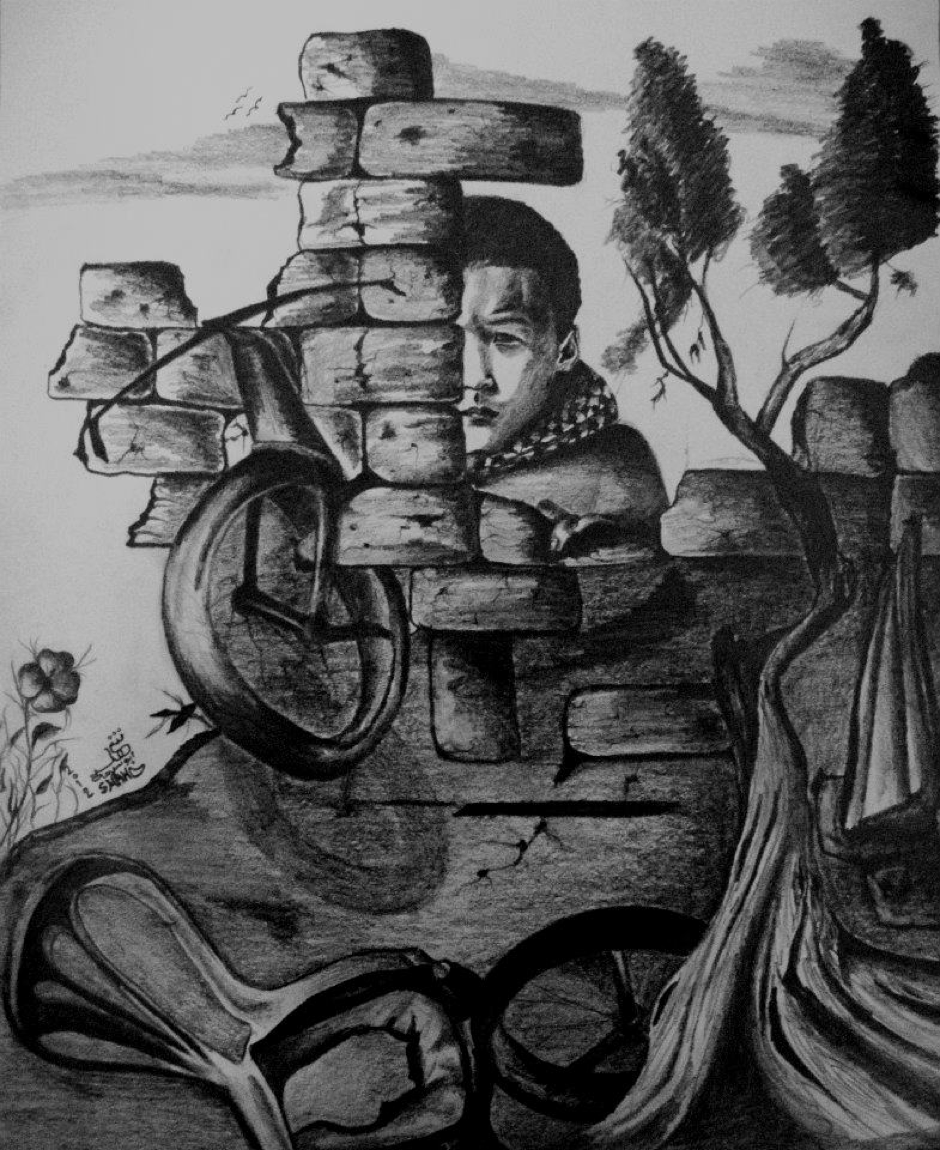
Figure 1:
An optimistic eye
____________________________________________________________
¶ The well-known Palestinian artist and art
historian Kamal Boullata, who died in August
2019, left behind a wealth of art and research, rooted in questions of
identity, resistance and exile. In his 2002 essay “Art under the Siege” he
asked:
“How
does one create art under the threat of sudden death and the unpredictability
of invasion and siege? More specifically, how do Palestinian artists articulate
their awareness of space when their homeland’s physical space is being
diminished daily by barriers and electronic walls and when their own homes
could at any moment be occupied by soldiers or even blown out of existence? In
what way can an artist engage with the homeland’s landscape when ancient orange
and olive groves are being systematically destroyed? When the grief of bereaved
families is reduced by the mass media to an abstraction transmitted at
lightning speed to a TV screen, what language can a visual artist use to
express such grief?”
These
questions have long troubled Palestinian artists as they attempt to process and challenge a precarious and dehumanising reality shaped by military occupation,
apartheid and siege. Here I make a humble effort to
frame drawings that I created in my
late teens and early twenties, situating them within a wider history of Palestinian cultural resistance.
Since the day I was born, in Jabalia Refugee Camp in the north of the
Gaza Strip, the biggest and most densely populated refugee camp in Palestine, I
have never known what life is like without occupation and siege, injustice and
horror. Like the child depicted in Figure 1,
growing up in a refugee camp was the window to understanding our reality under
Israeli colonial occupation. Art has been the way I naturally sought since a
very early age to describe what I felt was indescribable.

Figure 2: Displaced
____________________________________________________________
¶ I was only nine years old when my
parents noticed my drawing skills. At
that time they were limited to black warplanes, pillars of smoke in the
sky and crying eyes. This coincided with the eruption of the second intifada in
September 2000, when I used to accompany my mother and aunt to the martyrs’
funeral tents to offer our condolences. I used to hate the green colour, as it
was associated in my memory with loss and mourning; the martyrs’ funeral tents,
which were disturbingly visible in the
landscape of the Jabalia refugee camp, were mostly green. The
first poem I ever learned by heart was one by the Palestinian poet Mahmoud
Darwish entitled “And He Returned …In A Coffin”. As a
nine-year old girl, I stood in front of many mourning families in those green
tents, looked into their tearful eyes, and in a powerful but shaking voice I
recited:
It was moments
like these, during the tumult of the second intifada, that fundamentally shaped
my consciousness about the land and my place in it. Since childhood, the scenes
of war, the faces of martyrs, the injured and political prisoners, the weeping
of the martyrs’ relatives over the loss of their beloved, have been haunting me
with a desperate wish for this injustice to end. These scenes pushed me to seek
art as a way to process those extraordinary surroundings, to reconcile with my
wounds, to express my emotions, memories and experiences, much of which is
collectively shared amongst the Palestinians.
Creativity in
such a context is not only a necessary tool for survival in a taxing background
of violence but, as Boullata contended in several articles, an expression of survival. For
example, the “100 Shaheed—100
Lives” exhibition, by Ra’ed Issa
and Muhammad Hawajri from Bureij
Refugee Camp in central Gaza, commemorated the first one hundred victims of the
al-Aqsa intifada. The exhibition grew out of the artists’ intimate contact with the bereaved families and
violence. Using a blend of abstract, metaphorical and representational language, their artwork expressed “the
state of being a survivor of and eyewitness to daily death.”
____________________________________________________________
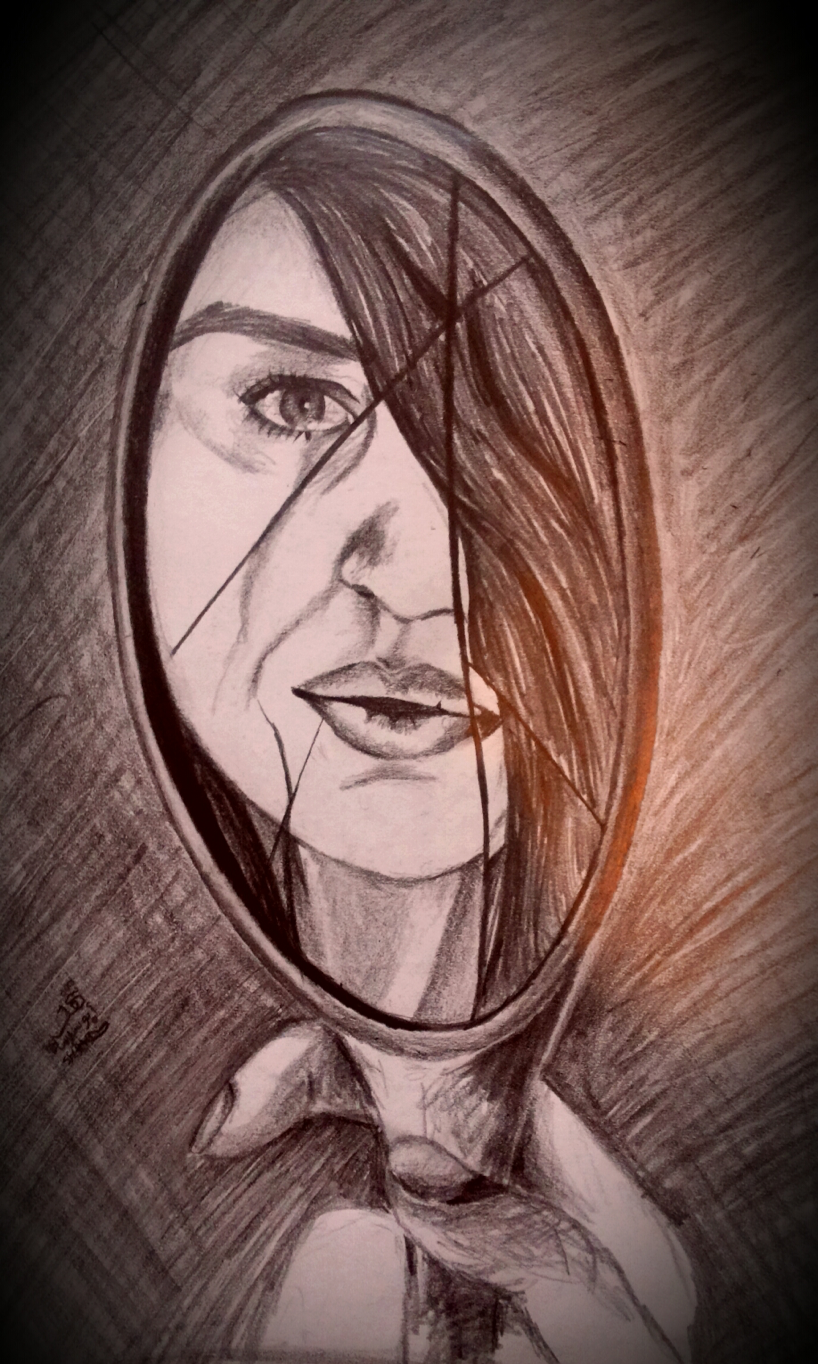
Figure 3:
Reflections
____________________________________________________________
Reflections
¶ Palestinian art, from the twentieth
century up until now, has served as a visual reflection of the
Palestinian struggle. It aimed to depict the reality of the Palestinian
people, their hopes and aspirations, their suffering, and urge for mobilisation
at an international level against injustice. It also acted as a tool to
provide a self-representational counter narrative to the hegemonic Zionist
one which demonised the Palestinian history and
people to justify their colonial domination.
Among many other
forms of cultural resistance, art for many Palestinians was seen as a way to
participate in writing their own visual narrative, to critically and creatively
engage with their socio-political surrounding matters, to express their
identity, and to amplify the Palestinians’ political demands. Against the
humanitarian imagery that reduced Palestinian refugees to victims, or colonial
representations that slammed them as terrorists, Palestinian art has sought to
transform the image of the Palestinians into active agents of revolutionary
change.
Over the course
of the Palestinian struggle, the Palestinian people increasingly regarded
artworks that expressed their living conditions under Israeli control as a
means of resistance. The Palestinian art movement thrived in the 1970s despite
many challenges, including the lack of any art infrastructure. Many Palestinian
paintings displaying the “forbidden” colours of the
Palestinian flag have been confiscated, and many artists, such as the renowned
artist of the Intifada Sliman Mansour, faced
detention due to their art that Israel perceived as “an act of incitement”. Let
us not forget the late Palestinian influential exiled artists Ghassan Kanafani and Naji Al-Ali, whose artistic and literary production led to
their murder in Lebanon and London respectively.
Personally,
observing the Palestinian children being born in a difficult reality that
subjugates them to terror and trauma at very young age was the most painful. Most of my drawings are of Palestinian
children whose innocent facial expressions I find most telling and urging for
liberation and social justice.
____________________________________________________________
Chains Shall Break
¶ Moreover, being a daughter of an
ex-detainee means I have grown a unique attachment to the plight of the
Palestinian political prisoners, not only from a political perspective but also
from a personal one. As a 19-year-old boy, my father spent a total of fifteen
years in Israeli jails, but he is only one amongst over a million Palestinians
who experienced detention since 1948, including children, women and elderly
people. The stories of resistance, resilience and repression that I grew up
hearing about his stolen youth have made me develop a particular passion to
this cause. Currently, over 5 thousand Palestinian detainees are in Israeli
captivity with no access to their most basic rights allowed by the Israeli Prison Service, including fair trial,
proper medical care and family visits.
The plight of
Palestinian political prisoners and their families, however, is not given the
deserved attention in the political arena, especially at an international
level. They are not only marginalised, but also dehumanised
in a media discourse that tends to reduce them to mere statistics or defines
their resistance in terms of “terrorism”, similar to the way Nelson Mandela and
other anti-apartheid activists in South Africa were represented. The drawings contained here were an attempt to
challenge such reductive and hostile representation, humanise
them, draw attention to their captive struggle inside Israeli jails and call
for action.
Throughout my
upbringing, I have witnessed their families’ immense pain as my family joined
their weekly protests in front of the Red Cross in Gaza, calling for
dismantling the Israeli prison system and freedom. As I developed more skills
of expression, I coupled drawings with writings that recorded stories of
Palestinian detainees and their families with whom I developed an intimate relation
after years of weekly protests. Many expressed their pain as a form of
imprisonment in time, another theme that inspired my drawings in my attempt to
communicate the families’ longing for a reunion with their beloved ones without
barriers in between. The
ticking of clocks, the tears, the longing.
I tried to depict
their determination to break their chains, which they
expressed repeatedly in legendary hunger strikes. “Hunger strike until either
martyrdom or freedom” is a motto that many prisoners adopted across the history
of the Palestinian Prisoners Movement. The drawing in Figure 4 aimed to
illustrate the defiant spirit of this motto.

Figure 4: Hunger until freedom – For Samer Issawi and all
freedom fighters in Israeli jails
____________________________________________________________
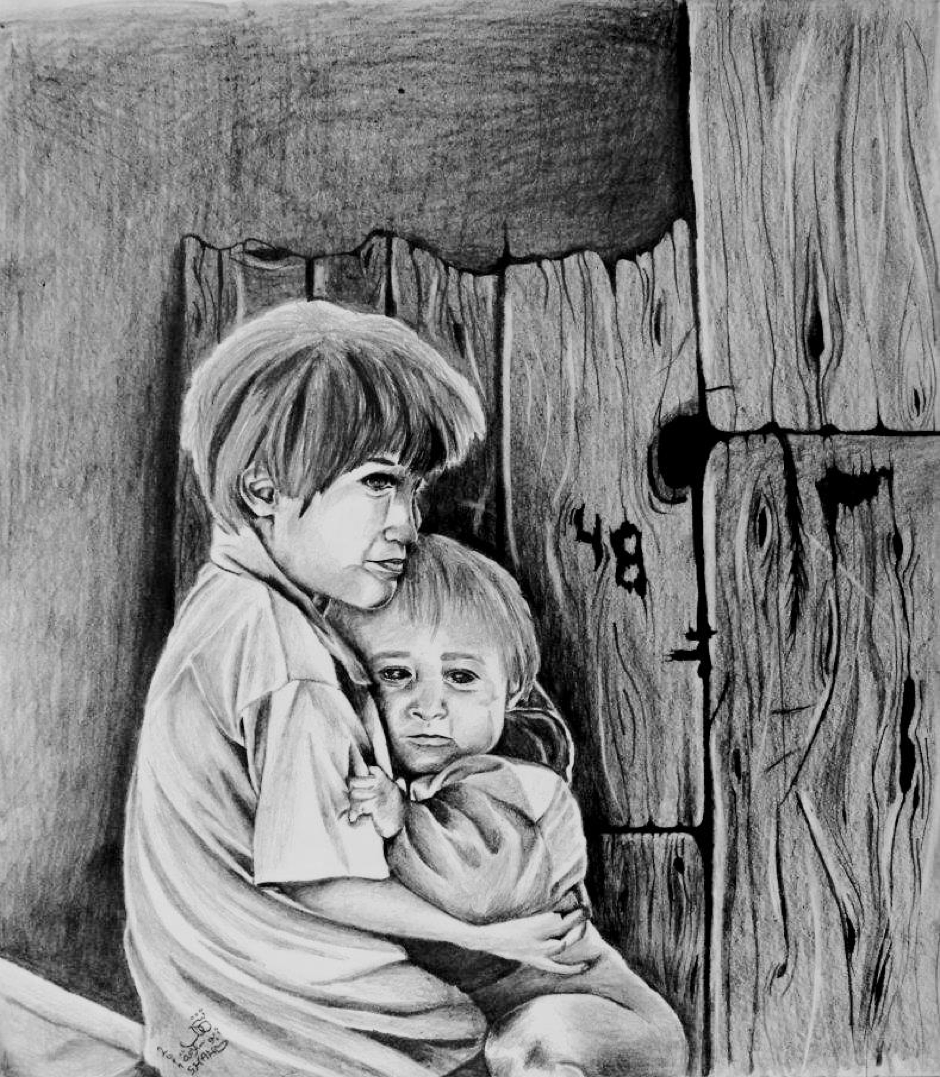
Figure 5: Traumatised childhood
____________________________________________________________

Figure 6: Fear of the
unknown
____________________________________________________________
An ongoing Nakba
¶ My generation, the third-generation
refugees, was already blueprinted with the traumatic events of the Nakba, which for Palestinians is not
only a tragic historical event, only to be commemorated once a year with events
such as art exhibits and national commemorations. “It was never one Nakba,” my grandmother Tamam used to say asserting that ethnic cleansing was never
a one-off event that happened in 1948, when Palestinians became stateless
refugees. The Nakba is experienced as
ongoing; an uninterrupted process of Israeli settler-colonialism and domination
that was given continuity by the 1967 occupation, the violent invasion of
Beirut and the Palestinian
refugee camps in Lebanon, the two intifadas of 1987 and 2000, and the siege of Gaza and the constant bombardments
and demolitions across the shrinking occupied Palestinian territories.
Growing up
hearing our grandmothers recount the life that they had before, the dispossessed lands that most would never
see again, has formed the collective memory of the Palestinian people. My
grandmother described a peaceful life in green fields of citrus groves and
olive trees in our original village, Beit-Jirja, one
of 531 villages that were violently emptied of their inhabitants and razed to the ground in 1948. The landscapes,
the tastes of their fresh harvests, the sounds of peasants’ dances, the joy of
family gatherings and traditional weddings, all burdened her traumatic memory
in a sudden rupture that turned our existence into non-existence. She found
consolation in storytelling that cultivated inside her children and
grandchildren a burning longing for return and a life of dignity.
The continuity of
our liberation struggle, from one generation to another, resembles hope for the
Nakba generation and their descendants, another theme that several of my
drawings attempted to express – see Figures 6, 7, 8 and 9. They were my
response to several Zionist leaders who assumed that “the old will die and the
young will forget.” The drawings come to assert that the old may die but the
young will keep on holding the key, until our inalienable right to return is
implemented. In 1948, most refugees fled in a haste and fear, taking whatever
they could carry at a moment’s notice. They carried the keys of their homes in
their exodus, and although many know that their homes no longer exist, they
held onto their keys, passed them
to their children, making the key become a symbol of the undying Palestinian
hope that return is inevitable. The young generation is perceived as those who
will carry the burden of the cause and continue the struggle of the previous
generations until freedom, justice, equality and return to the Palestinian
people. Thus, Palestinian children became the symbol through which “We nurse
hope”, as Mahmoud Darwish said.
____________________________________________________________
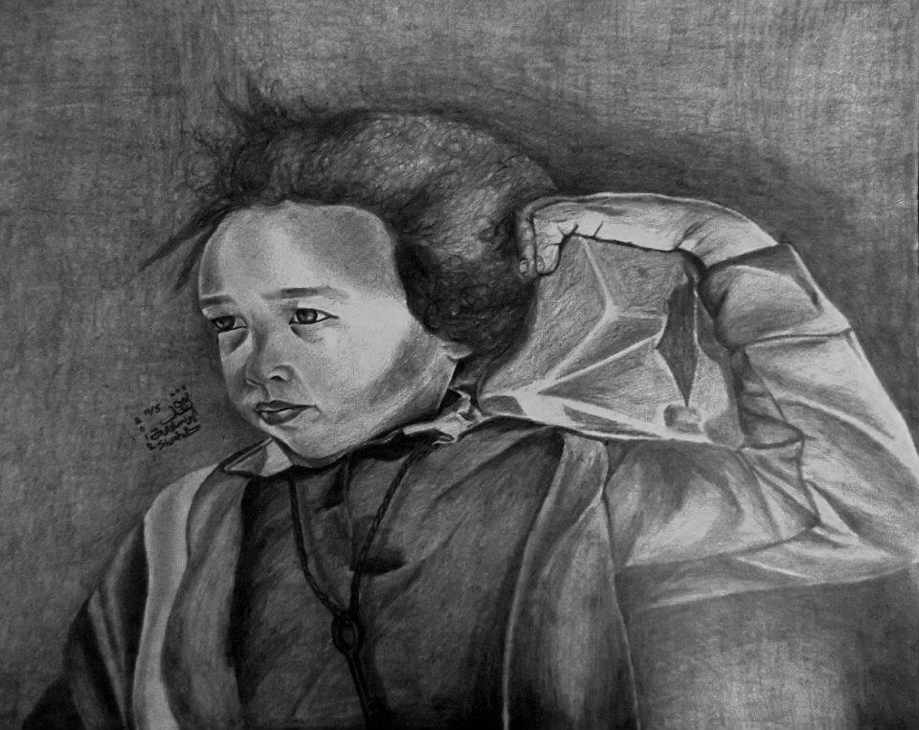
Figure 7: The young will carry on the struggle
____________________________________________________________
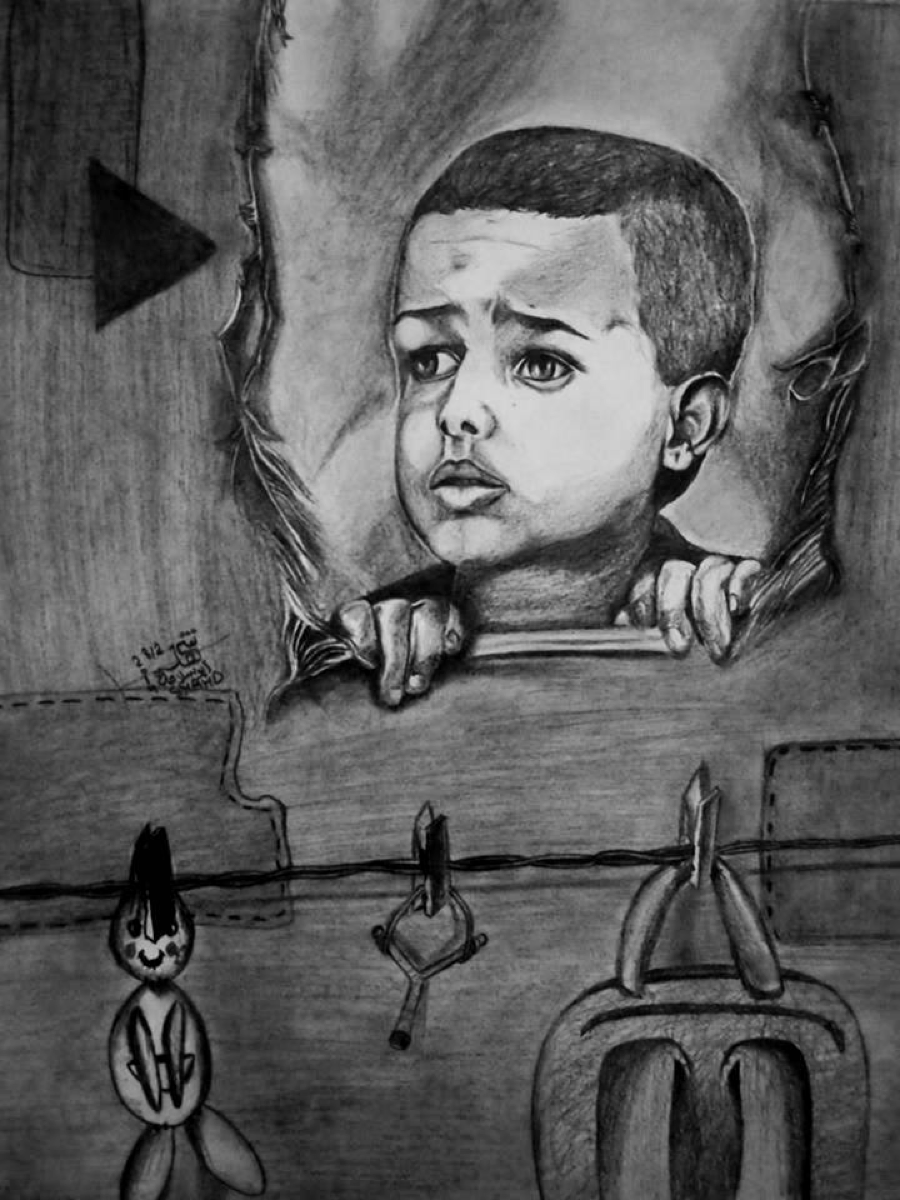
Figure 8: Breaking the State of Permanent Temporariness
____________________________________________________________
Memories of War
¶ The majority of
Palestinians have become politicised as
a result of the complex and intense political reality that shapes
every aspect of their lives. I am no exception. Art for me was an expressive
tool in which I found empowerment for
my voice. It served as a tactic to overcome the state of siege and
occupation imposed on us, to escape the feeling of helplessness that can be
easily felt in such suppressive and oppressive life conditions that the
Palestinian people endure. It was also a tool that I used to engage politically
and socially with the harsh surrounding. With internet becoming accessible, I
resorted to online social networks to reach out to the international community,
believing that the Palestinian people’s struggle for liberation is a central
global issue.
The turning point
of my life was at the age of seventeen, after witnessing the 22-day massacre
that the Israeli occupation forces committed against our people in Gaza in
2008-9. During that dismal period when we remained in darkness amidst the
continuous bombing, destruction and mass killing of Palestinians in Gaza, I had
a terrible sense of alienation from the rest of the world communities who were
busy marking New Year Celebrations with fireworks.
It all erupted
while we were attending the mid-term exams. It was a normal day until Israeli
warplanes started shelling all over the Gaza Strip, announcing hundreds of
victims from the first hour. The chaos that ensued at school and the living
horrors that followed for 22 days of being
struck by military machines from land, sea and air, left a
lasting impact on everyone.
One of the most
memorable moments is when one night, I was sitting in blackout, surrounded by
my mother and siblings in one small room of our house under one blanket. No
voice could be heard, just heartbeats and heavy, shaky breaths. The beating and
breathing grew louder after every new explosion we felt crashing around,
shaking our home and lighting up the sky. Then suddenly, the door of our house
opened violently and somebody shouted, “Leave home now!” It was my dad rushing
in to evacuate our house because of a bomb threat to a neighbour. I remember
that my siblings and I grasped Mum and started running outside unconsciously,
barefoot. For three days we stayed in a nearby house, powerless as we sat,
waiting to be either killed, or wounded, or forced to watch our home destroyed.
This merciless
and inhumane attack killed at least 1,417 men, women and children. I wasn’t
among them but what if I had been? Would I be buried like any one of them in a
grave, nothing left of me but a blurry picture stuck on the wall and the memory
of another teenage girl slain too young? Would I have been for the world just a
number, a dead person? I refused to dwell on that thought. Many drawings of
mine, such as those presented here,
were inspired from memories attached to this traumatic event and similar
experiences that proceeded. The trauma was relived whenever an attack was
repeated. Most importantly, resorting to art was a necessary means that
helped me preserve my sanity and overcome the harsh traumatic events that I experienced throughout my
life in the suffocating blockade of the Gaza Strip.
____________________________________________________________
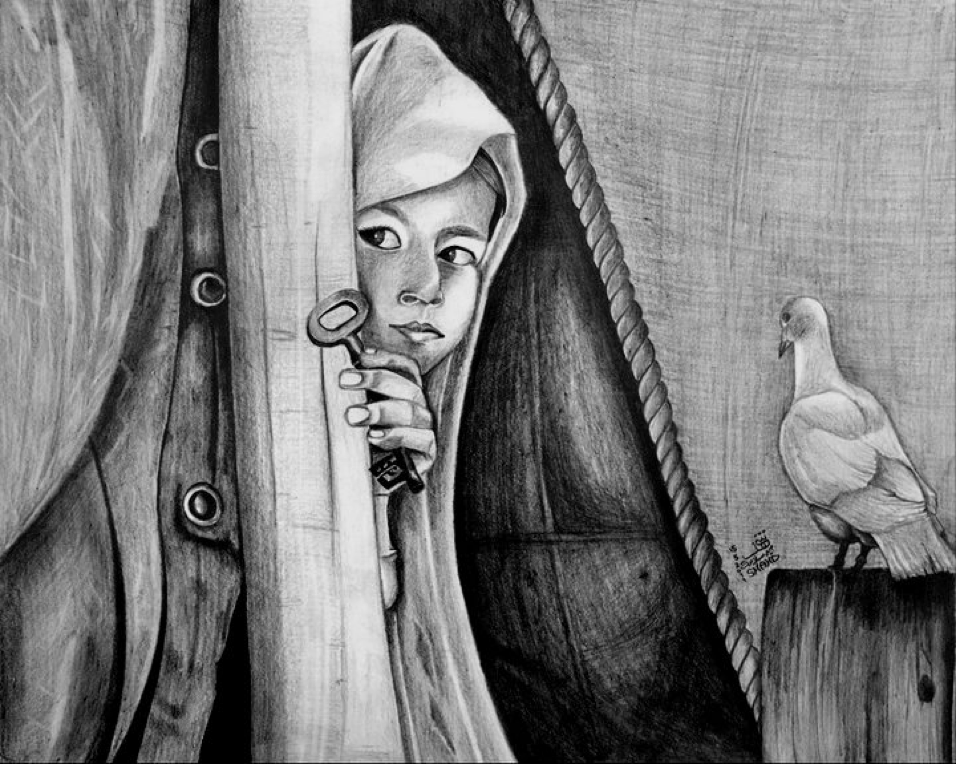
Figure 9: We Shall Return
____________________________________________________________
References:
Kamal Boullata,
“Art under the Siege”, Journal of Palestine Studies, vol. 33, no. 4
(Summer 2004), pp. 70-84
Mahmoud
Darwish, And He Returned in a Coffin, from the author’s first
collection Olive Leaves [,
published in 1964; reprinted 2014.
·
All drawings were done with 2B and 4B lead pencil on
paper, 14 cm x17 cm








